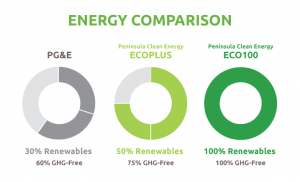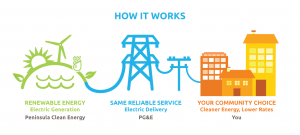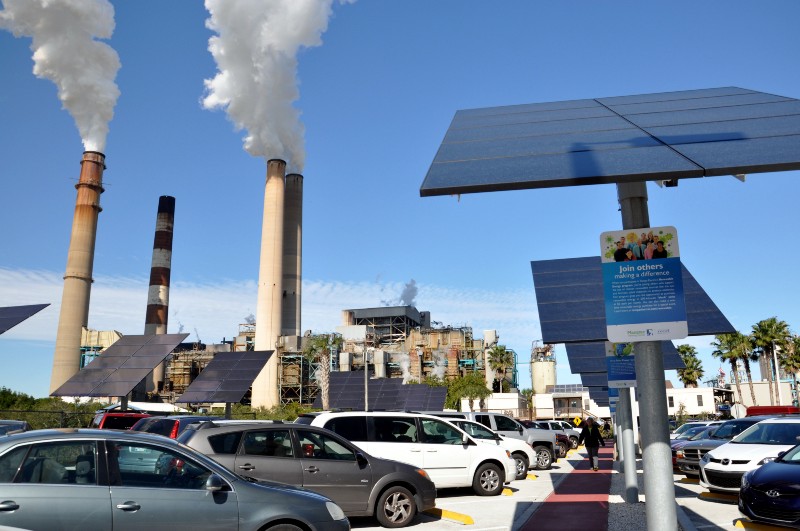Ready or not, community choice energy may be coming to your town. But don’t worry, this is very much a good thing.
Starting this month, residents and businesses in yet another large “community”- in this case an entire county in California with 20 towns-will be offered the opportunity to individually choose their electricity provider. In so doing, customers will have the ability to get 100% of their grid power from renewable sources.
For the first time, customers have a choice of where all their grid energy comes from.
Community choice energy is not a new concept, but it is gaining popularity. Let’s look at an example of this program and see how it works, how it affects solar owners, and those about to go solar.
A Benefit of Deregulation
Under a platform called Community Choice Aggregation (CCAs), state laws allow residents and businesses of participating communities the option to stay with their current utility, or switch to an alternative provider — for energy source generation. Community buying power is aggregated to secure favorable generation contracts by the alternative provider, and the platform is increasingly being used to secure clean or renewable power sources as the alternative to the existing source. So far, California, Illinois, New Jersey, New York, Ohio and Rhode Island have joined Massachusetts in adopting the platform into state law.
The Newest Example
Bordering San Francisco (CA) city and county to the south, San Mateo county is the latest to adopt the program. Its 800,000-plus residents in such towns as Redwood City, Daly City, San Mateo and San Bruno (home of San Francisco International airport) will be offered the option to continue having investor-owned utility Pacific Gas & Electric (PG&E) source their electricity, or go with the new, locally-controlled provider Peninsula Clean Energy (PCE).
For those that switch, doing nothing is the only thing they have to do. The San Mateo program is an opt-out program, meaning residents/businesses who do not specifically opt-out will automatically — and seamlessly — be switched to the PCE option. Then really only two things change: where their energy comes from, and their bill.
In a presentation at the Redwood City Council chambers, PCE’s Dan Lieberman and CEO Jan Pepper explained that they have short and long term contracts with various renewable energy suppliers, enough to satisfy the needs of the entire county. At the outset, wind generated energy will account for almost 80% of the total.
Dollar wise, PCE’s program offers a choice of getting either 50% or 100% renewable energy, with the former (“ECOplus”) usually resulting in a slight savings per month in the average electricity bill, and the latter (“ECO100”) a slight premium over current (PG&E) rates. A handy calculator on their site can quickly show the differences, and in my case it was a fairly negligible change either way.

Courtesy Peninsula Clean Energy
Regardless of choice, all monthly bills will still come from PG&E, and customers will still pay only PG&E. The only difference is within the bill: instead of PG&E billing for power they generate, say, from a natural gas-fired power plant, it will instead bill for power generated by PCE from wind turbines. PG&E will still be responsible for not only billing, but transmission, repair, maintenance, the grid… all as before. Power goes off? Call PG&E.
So PCE does not completely replace PG&E. They work in tandem, with PCE providing the renewable energy to PG&E for delivery to you over the grid, and PG&E taking care of everything else.

Courtesy Peninsula Clean Energy
Customers can opt-out of the program at any time, and can opt-up or down within the program as well.
PCE has a Board of Directors, but in this case it is made up of representatives of each of the member cities, such as city council members, mayors, etc., and county reps, all serving in non-paying roles.
Benefits
Beyond the amazing change to be able to choose where your grid energy comes from, there are other substantial benefits to this program:
- Either PCE program offers more renewable energy usage than before
- Compared to a current PG&E bill, one can save a few dollars under ECOplus, or one can spend just a few dollars more for the 100% renewable energy ECO100
- Profits generated by PCE are reinvested back into the community, mainly toward new energy efficiency programs
- Taxes do not increase, as PCE is paid for by revenues, not taxes
- All low income energy programs customers had with PG&E remain, including CARE, FERA, and Medical Baseline discounts
It is a program that has worked well in the Bay area since Marin County (bordering San Francisco city/county to the north) adopted a CCA program in 2010. Sonoma and San Francisco counties followed suit in 2014 and 2016. In southern California, the city of Lancaster (pop. ~ 170,000) adopted the program in October, 2015.
What if you have already gone solar? Or are about to?
So then does community choice energy take the place of going solar at your home? Well, not so much.
Perhaps most significantly, while the program does provide renewable energy to customers, it will not reduce monthly electric bills nearly as much (if at all) compared to having a solar system.
A solar system would generate much more savings per month, for potentially 25–30 years or more, whereas the PCE program could either save or cost the customer a very slight percentage compared to their current PG&E bill.
And of course with a solar system one is generating their own power, and could store excess energy in batteries to use during peak billing times (further reducing electricity costs), or even go off the grid in certain areas. Home resale value escalation, tax credits, and a myriad of other benefits exist to owning your own solar system.
But it is a wonderfully complementary piece for those who already have solar or are thinking about it. The program gives the added benefit of providing renewable energy for any grid-distributed, supplemental energy that is needed at solar homes or businesses.
And Net Metering?
Speaking of the grid, for Net Energy Metering (NEM) customers, if you are already enrolled in PG&E’s program, then you will be automatically enrolled in PCE’s program. New solar owners can still participate as well.
Any credits obtained roll-over each month, and PCE will do an annual cash-out in April for any unused credits over $100 (under $100 continues to roll-over). For existing NEM customers the enrollment date will be the month of or after their annual true-up date so as to not lose any credits earned under PG&E’s program.
Therefore customers can still sell their excess energy under NEM, but now to PCE, whose rates will be a very favorable $.01/kWh above the solar production retail price paid by PG&E (PCE maintains that current CCAs so far have been able to offer better rates for Net Metering credits than the utilities).
All in all, community choice energy is a great program for its members. Six more counties in California alone — including Los Angeles county — will adopt the program in 2017, and with over 1300 municipalities now operating under CCAs nationwide, it is a successful and popular program that’s quickly gaining strength in numbers. It is a great way for the entire community to utilize renewable energy, come rain, shine or gloom of night.
